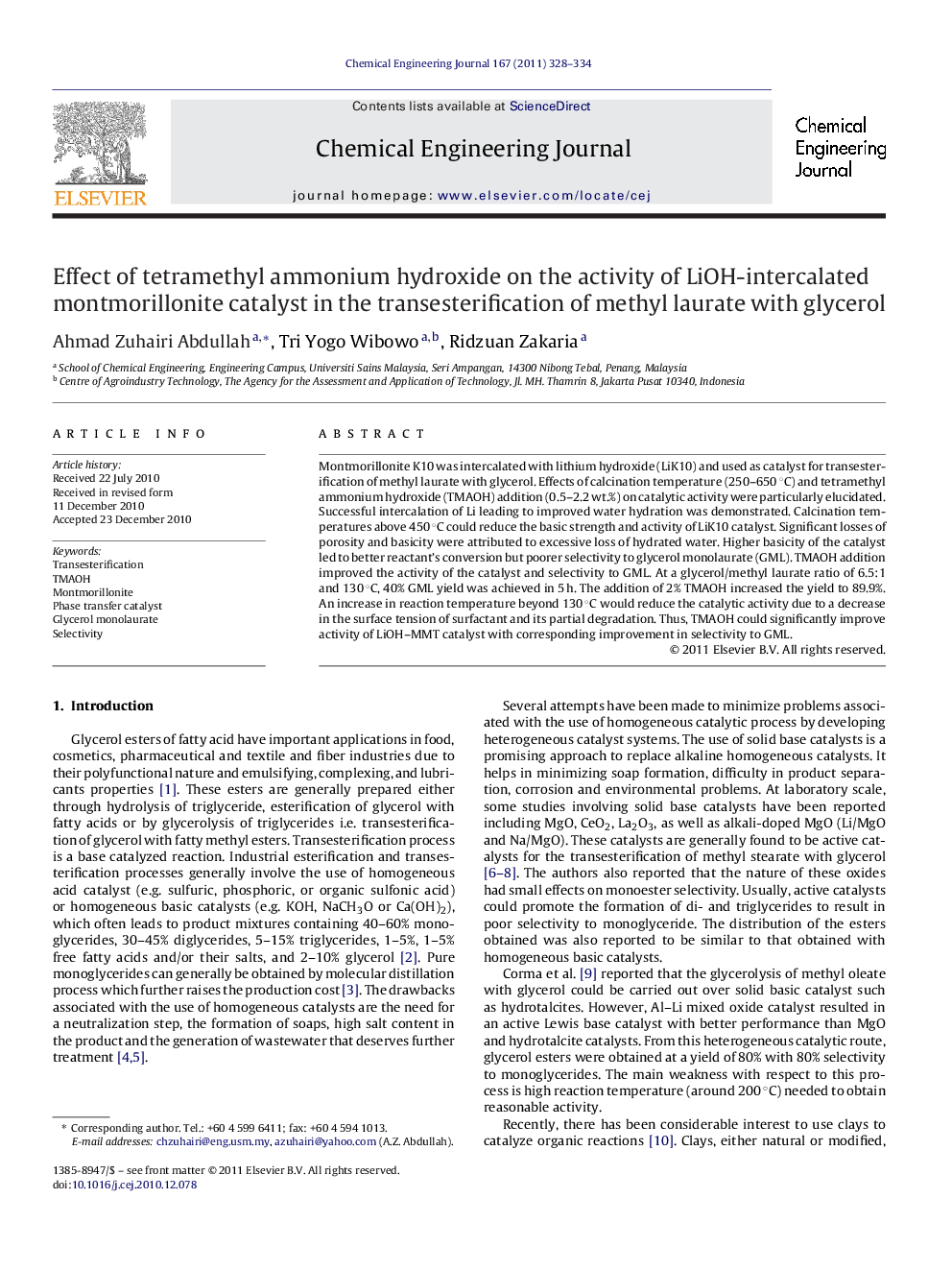| Article ID | Journal | Published Year | Pages | File Type |
|---|---|---|---|---|
| 151639 | Chemical Engineering Journal | 2011 | 7 Pages |
Montmorillonite K10 was intercalated with lithium hydroxide (LiK10) and used as catalyst for transesterification of methyl laurate with glycerol. Effects of calcination temperature (250–650 °C) and tetramethyl ammonium hydroxide (TMAOH) addition (0.5–2.2 wt.%) on catalytic activity were particularly elucidated. Successful intercalation of Li leading to improved water hydration was demonstrated. Calcination temperatures above 450 °C could reduce the basic strength and activity of LiK10 catalyst. Significant losses of porosity and basicity were attributed to excessive loss of hydrated water. Higher basicity of the catalyst led to better reactant's conversion but poorer selectivity to glycerol monolaurate (GML). TMAOH addition improved the activity of the catalyst and selectivity to GML. At a glycerol/methyl laurate ratio of 6.5:1 and 130 °C, 40% GML yield was achieved in 5 h. The addition of 2% TMAOH increased the yield to 89.9%. An increase in reaction temperature beyond 130 °C would reduce the catalytic activity due to a decrease in the surface tension of surfactant and its partial degradation. Thus, TMAOH could significantly improve activity of LiOH–MMT catalyst with corresponding improvement in selectivity to GML.
Graphical abstractFigure optionsDownload full-size imageDownload as PowerPoint slideResearch highlights▶ LiOH-modified montmorillonite K10 synthesis and characterization. ▶ Process variables in transesterification of methyl laurate with glycerol. ▶ Reduced basic strength when calcined above 450 °C. ▶ TMAOH improved glycerol monolaurate yield by 50%.
